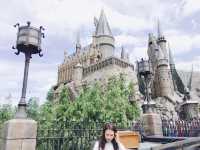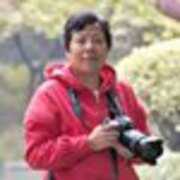Having lived in the city for a long time, I often look forward to Tao Qian's life - "knotting in the world, not only without the noise of cars and horses, but also enjoy the pleasure of the countryside. Daily morning is ridiculous, but also can gather Chrysanthemum under the East fence, at night with moonlight hoe, seven or eight stars, two or three rainy mountains, how detached. Liangdong Village in Qingzhou is such a village that can give people a transcendent mood and real life pleasure.
;
Yangdong Folk Village Review
4.4 /542 Reviews
Yangdong Folk Village Frequently Asked Questions
More Questions
134, Yangdong Village Road, Gangdong-myeon, Gyeongju, Gyeongbuk
1 Answer
Here are some hotels near Yangdong Folk Village: Hanok PEN Town Pension Gyeongju,Nakwon Hanok Guesthouse,Samsan Gotaek,Gyeongju Hanok PEN Town Guesthouse,Hyangdan Hanok Guesthouse
1 Answer
Popular Destinations
Puerto Rico Travel | Los Angeles Travel | Memphis Travel | Miami Travel | Tanay Travel | Malaysia Travel | Portland Travel | Jiuzhaigou Travel | Palm Springs Travel | Jersey City Travel | Jinan Travel | Kunming Travel | Maldives Travel | Lorain County Travel | Wadmalaw Island Travel | Tomakomai Travel | Jeonju Travel | Orem Travel | Trancoso Travel | Jasper Travel | Saint-Pierre-d'Albigny Travel | Port Antonio Travel | Grayslake Travel | Hapeville Travel | Kettering Travel | Puebla Travel | Cholula Travel | Mougins Travel
Recommended Attractions at Popular Destinations
Bangkok attraction near me | Manila attraction near me | Tokyo attraction near me | Hong Kong attraction near me | Seoul attraction near me | Taipei attraction near me | Los Angeles attraction near me | New York attraction near me | Shanghai attraction near me | Kuala Lumpur attraction near me | Shenzhen attraction near me | Osaka attraction near me | London attraction near me | Singapore attraction near me | Guangzhou attraction near me | San Francisco attraction near me | Beijing attraction near me | Macau attraction near me | Bali attraction near me | Paris attraction near me | Orlando attraction near me | Jakarta attraction near me | Ho Chi Minh City attraction near me | Chicago attraction near me | Phuket attraction near me | Toronto attraction near me | Istanbul attraction near me | Cebu attraction near me | Dallas attraction near me | Seattle attraction near me
Popular Attractions
Atal Sarovar, Rajkot | Georgia Aquarium | Tokyo Tower | Shedd Aquarium | Osaka Aquarium Kaiyukan | Elephant Jungle Sanctuary Phuket | YONA Beach Club Phuket | New York Aquarium | Moulin Rouge | Belém Tower | Museum of The Future | Tokyo Disneyland | The National Residence of the Invalids | Zhangjiajie National Forest Park | Muangboran the Ancient City (Samut Prakan) | Crandon Beach | 東京ディズニーランド | Vienna Music Society | Daiba | Calhoun County Library | The Midland Energy Library | Bholenath temple | Lac Ste. Anne | Appaloosa Park | Municipal Museum Lanškroun | Memorial'naya Zona Parka Gor'kogo | Tirupati Balaji Temple | GAROWE STADIUM | Ambalavayal viewpoint | The Huntington Library, Art Museum, and Botanical Gardens
Popular Travelogues
Bangkok Travelogue | Manila Travelogue | Tokyo Travelogue | Hong Kong Travelogue | Seoul Travelogue | Taipei Travelogue | Los Angeles Travelogue | New York Travelogue | Shanghai Travelogue | Kuala Lumpur Travelogue | Shenzhen Travelogue | Osaka Travelogue | London Travelogue | Singapore Travelogue | Guangzhou Travelogue | San Francisco Travelogue | Beijing Travelogue | Macau Travelogue | Bali Travelogue | Paris Travelogue | Orlando Travelogue | Jakarta Travelogue | Ho Chi Minh City Travelogue | Chicago Travelogue | Phuket Travelogue | Toronto Travelogue | Istanbul Travelogue | Cebu Travelogue | Dallas Travelogue | Seattle Travelogue
Popular Ranked Lists
Popular Luxury Hotels Near Rupnagar | Top 6 Bars in Honolulu | Popular Luxury Hotels Near Mimasaka | Top 20 Fine Dining in Toronto | Popular Luxury Hotels Near Ipswich | Popular Family-friendly Attractions Near Haicheng | Popular Luxury Hotels Near Nyiregyhaza | Popular Family-friendly Attractions Near Changling | Top 12 Fine Dining in Changsha | Popular Premium Hotels Near Dhaka | Top 5 Fine Dining in Foshan | Top 15 Fine Dining in Fukuoka | Top 5 Fine Dining in Phu Quoc Island | Popular Family-friendly Attractions Near Zizhou | Popular Luxury Hotels Near Elation | Popular Luxury Hotels Near Lang Son | Popular Family-friendly Attractions Near Midu | Top 6 Bars in Lhasa | Popular Family-friendly Attractions Near Kaihua | Popular Family-friendly Attractions Near Baishan | Top 19 Fine Dining in Madrid | Top 20 Local Restaurants in Dali | Popular Family-friendly Attractions Near Mulan | Top 5 Fine Dining in Guiyang | Top 12 Fine Dining in Ho Chi Minh City | Top 15 Fine Dining in Venice | Top 19 Local Restaurants in Urumqi | Top 12 Fine Dining in Edinburgh | Popular Fine Dining in New York | Global Synthesis - Trip.Trends
About
Payment Methods
Our Partners
Copyright © 2024 Trip.com Travel Singapore Pte. Ltd. All rights reserved
Site Operator: Trip.com Travel Singapore Pte. Ltd.
Site Operator: Trip.com Travel Singapore Pte. Ltd.















